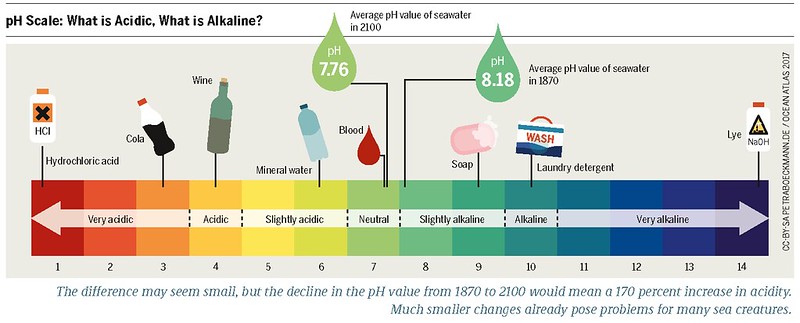The pH of a solution prepared by dissolving 0.50 g of Barium Oxide (BaO) in enough water to make 0.500 L of solution is approximately 12.11. This high pH value is due to the formation of Barium Hydroxide (Ba(OH)2), a strong base, when BaO is dissolved in water.
Understanding the Calculation
-
Determining the Moles of BaO: The molar mass of BaO is 153.329 g/mol, so the number of moles of BaO in the solution is 0.50 g / 153.329 g/mol = 0.00326 mol.
-
Reaction of BaO with Water: When BaO is dissolved in water, it reacts to form Barium Hydroxide (Ba(OH)2), which is a strong base. The reaction is:
BaO(s) + H2O(ℓ) —> Ba2+(aq) + 2OH¯(aq)
- Calculating the Molarity of Hydroxide Ions: The molarity of the hydroxide ions (OH¯) in the solution can be calculated as follows:
Molarity = moles of OH¯ / liters of solution
= 2 * moles of BaO / liters of solution
= 2 * 0.00326 mol / 0.500 L
= 0.01304 M
- Calculating the pOH: The pOH of the solution can be calculated using the formula:
pOH = -log[OH¯]
= -log(0.01304)
= 1.89
- Calculating the pH: The pH of the solution can be calculated using the formula:
pH = 14 – pOH
= 14 – 1.89
= 12.11
Contaminants and Chemicals in the Solution
The pH of a solution is a measure of its hydrogen ion concentration, and not a direct measure of any specific contaminant or chemical. However, the pH of a solution can affect the solubility and reactivity of certain contaminants and chemicals.
At high pH values, such as the one observed in the Barium Oxide solution (pH 12.11), some metals and metalloids can precipitate as hydroxides, which can help to remove them from the solution. On the other hand, at low pH values, some contaminants and chemicals can become more soluble and mobile, which can make them more difficult to remove.
To deal with contaminants and chemicals in a solution containing Barium Oxide, it is important to first identify the specific contaminants and chemicals present, and then to determine the appropriate treatment methods based on their properties and behavior at different pH values. Some common treatment methods for contaminants and chemicals in water include precipitation, filtration, ion exchange, and chemical treatment.
Conclusion
In summary, the pH of a solution containing Barium Oxide in water is approximately 12.11, and can be affected by the presence of contaminants and chemicals. To deal with contaminants and chemicals in a solution containing Barium Oxide, it is important to identify the specific contaminants and chemicals present, and to determine the appropriate treatment methods based on their properties and behavior at different pH values.
References
- ChemTeam. (n.d.). What pH results when an oxide is dissolved in water? Retrieved from https://www.chemteam.info/AcidBase/Calc-pH-when-an-oxide-is-dissolved-in-water.html
- Socratic. (2016, July 24). What is the pH of a 0.10 M solution of barium hydroxide, Ba(OH)2? Retrieved from https://socratic.org/questions/what-is-the-ph-of-a-0-10-m-solution-of-barium-hydroxide-ba-oh-2
- Embibe. (n.d.). Predict the pH of the solution formed on the reaction of barium with water. Retrieved from https://www.embibe.com/questions/Predict-the-pH-of-the-solution-formed-on-the-reaction-of-barium-with-water.%0A/EM8077206

